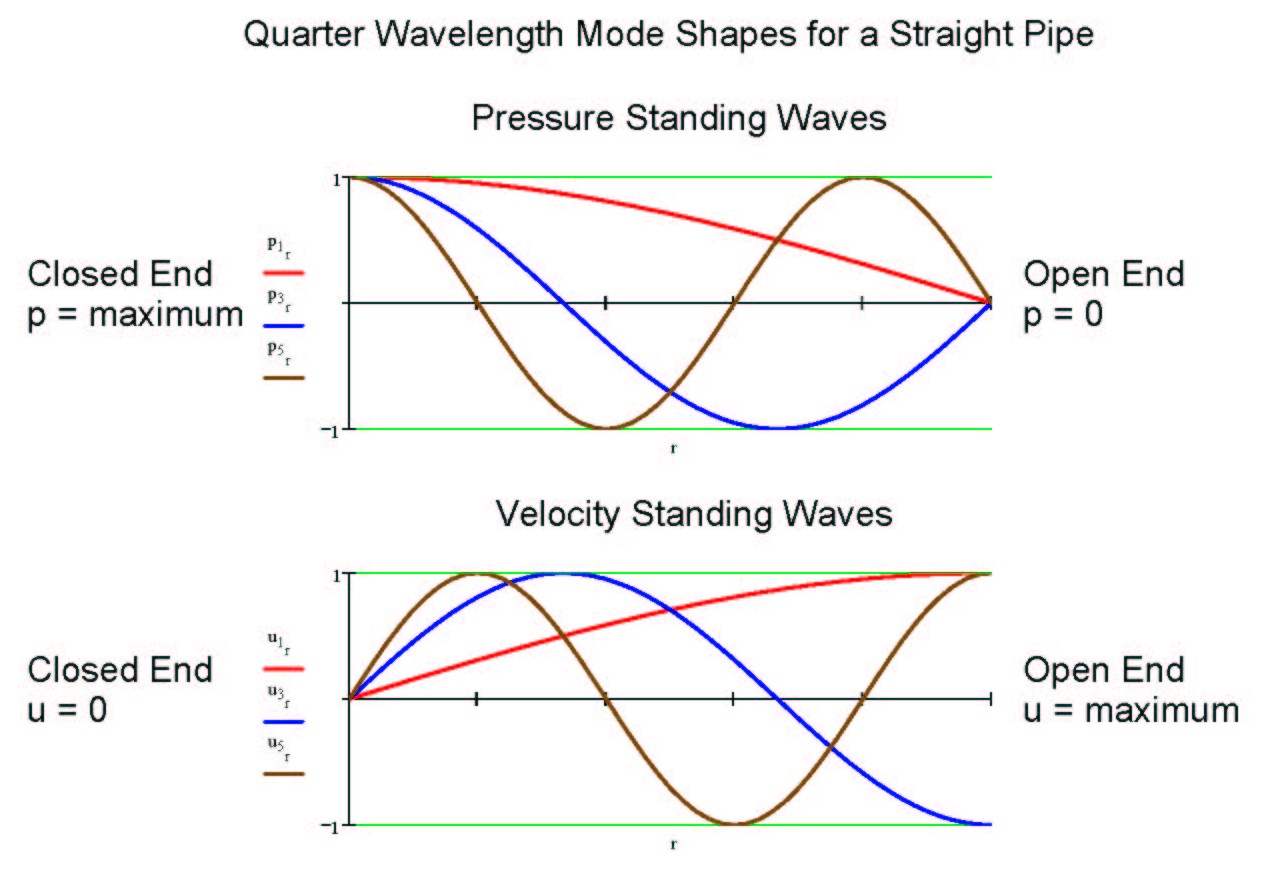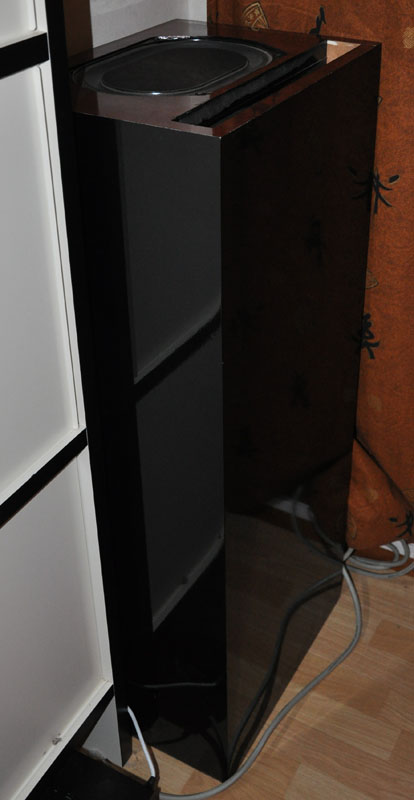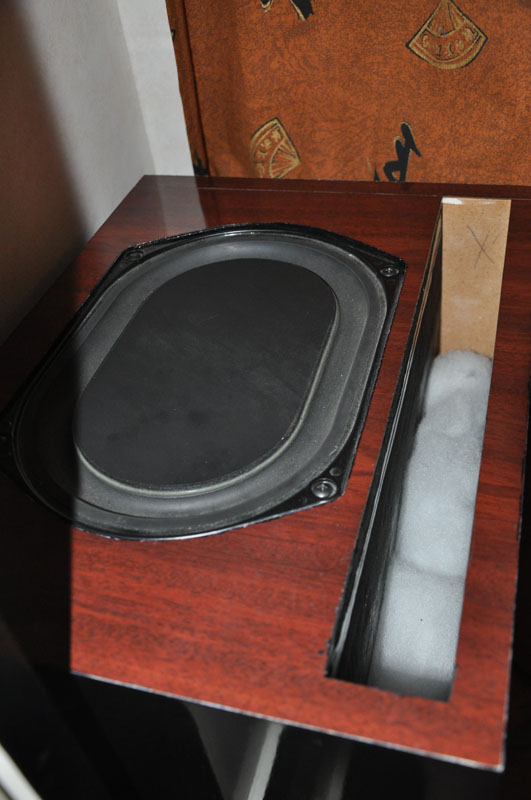 av JM » 2015-12-05 18:05
av JM » 2015-12-05 18:05
Här berör Martin King i dialog med en frågeställare ett nytt synsätt på TL, likheter/olikheter med basreflexhögtalare och att dämpmaterial inte påverkar avstämningen av de lägsta frekvenserna samt skall frekvensomfånget överstiga 3 oktaver krävs kritiskt placerat dämpmaterial för dämpa kamfiltereffekterna i lite högre frekvenser. Martin King berör även den dubbla impedans puckeln synlig i DrBoars mätningen ovan.
1. The hornresp simulation shows the output of the woofer alone drops of at around 40hz and then this is where the response at the end of the pipe rises and does the work for the lower frequencies.
What confuses me is in the Loudspeaker Design Cookbook it defines transmission lines as a non resonant device, more like a phase inverter which rotates the rear pressure wave 180 degrees so it is in phase with the front pressure wave. I am left wondering if the line is resonant - similar to an organ pipe, or the port on a bass reflex which resonates in a narrow frequency range but is mostly out of phase with the front radiator except for the lower bass extension.
If I placed the same 12 inch woofer in an infinite baffle I don't think it would make the same output at 25hz as the T line... is this because the transmission line at that frequency has a pressure wave coming from the front surface of the speaker as well as the pipe? Like having the equivalent of a larger speaker cone?
(MJK) For now restricting the answer to the frequency range 10 Hz to 100 Hz and looking at what sound is produced by the driver and what is produced by the open end of the unstuffed TL a few interesting parallels with bass reflex enclosures (abbreviated BR) can be drawn. First a driver that would work well in a BR box will probably also work well in a TL. In both cases a driver with a given fs and Qts, a resonant device, is mated with a box that also has a resonance near fs. This is true for the BR and the unstuffed TL enclosure. When you bring the two resonant devices together, driver and box, a new system is formed with two distinct resonances that form the classic double humped impedance curve that has been displayed for years for bass reflex systems. The two peaks of the double humped impedance curve are the two resonances, one above and one below the original driver fs frequency. An unstuffed TL and BR speaker system are both resonant speakers.
Between the two humps an impedance minimum exists very close to the fs frequency with a magnitude approximately equal to the driver's DC resistance value. At this frequency the air moving in the BR or TL cabinet exerts a pressure against the driver cone that significantly attenuates the driver motion. At this frequency almost all of the bass from the speaker is coming out of the port in the BR or the open end of the TL and is 90 degrees out of phase with the driver motion at this frequency.
So an unstuffed TL and a BR behave in a very similar manner below 100 Hz. If you buy into my explanation and then go back and read the Cookbook explanation I think you will see that it is out of date and wrong. The Cookbook section on TL theory is not consistent with the latest work on TLs that has produced the programs used to accurately design and predict the performance of TL enclosures. The Cookbook is the old school explanation (where the fibers move and the speed of sound is slowed) whish has been shown to be flawed and does not yield good TL designs. The Cookbook is a great resource but unfortunately this particular section is not current.
2. Most of the transmission line designs I have seen on the internet have the driver on the end of the pipe, not 1/3 down the line. Why is this way not more common in subwoofers. Either I have missed something or there are downsides to the design I used but a near flat response from 25-100 hz seems better than 25-70. Also I think I understand what is happening, that first dip is the first harmonic of the line length and moving the driver 1/3 down- the pressure waves move down the first 1/3 and reflect back out of phase at the same frequency as the first harmonic cancelling it out... is this right?
(MJK) At the minimum between the two humps in the impedance curve the air in the unstuffed TL moves as a standing wave that is 1/4 of a sine wave. The next standing wave is 3/4 of a sine wave, then next is 5/4 of a sine wave. For a perfectly straight TL tuned to 40 Hz, the 3/4 wave will occur at ~ 120 Hz and the 5/4 wave at ~ 200 Hz. For a driver at the closed end the open end air motion will be +/- 90 degrees out of phase with the driver. Look at the picture on the top of the opening page of my website to see the pressure and velocity profiles in a straight TL. When the driver is shifted to 1/3 of the length of the TL it tries to excite the 3/4 wave at the least responsive point and in essence the portion of the TL between the driver and the closed end acts as a stub tube that sucks up all of the sound coming off the back the fir driver cone and no sound travels to the open end. This eliminates the dip you see in the plot when the drive is mounted at the closed end.
For a subwoofer where you want the maximum output from the 1/4 wave to produce bass but don't want the dip that is created by the 3/4 wave the best options are to offset the driver as you have already observed to to dramatically taper the TL along the length (S0 >> SL) . For a sub crossing over around 100 Hz you can push the 3/4 wave much higher in frequency if you taper the TL.
You can see most of these effects in the case studies of my alignment tables article.
While the unstuffed TL and the BR share a lot of the same performance characteristics as described above, I think the two big differences are the lack of the port and the fiber stuffing in a TL design. When a standing wave is excited in the TL cabinet (not the ML TL variation) the oscillating air motion occurs along the entire length of the TL. In the BR design the air motion is essentially restricted to the slug of air in the port, there is essentially a step change in air velocity at the inner end of the port tube. The air in the BR box just compresses and rarifies with very little actual motion. I suspect that the step change in air velocity contributes to the chuffing heard from some BR enclosures when they are driver hard. This discontinuity in air velocity is not seen in a classic TL and severely tapered TLs with very small open ends have not been reported to suffer from classic bass reflex port chuffing noises.
When you add stuffing to a TL you help eliminate the impact of the 3/4, 5/4, and other higher harmonics as well as any other potential standing waves inside the enclosure, this reduces the large peaks and dips to much smaller ripples in the SPL response. You also round off the transition from flat SPL to the inevitable 24 dB/octave roll off at low frequencies way below fs. You gently roll the response off and control/damp the box output to avoid the boomy bass sometimes associated with poorly designed BR systems. By adding or removing stuffing the TL is easily tunable, this is not as easily accomplished in a BR cabinet. --- Martin King
JM
Annihilerar antimateria. Beauty is in the Brain of the Listener. We are standing on the shoulders of giants.
"Kill your Darlings" => Scientific Progress.







